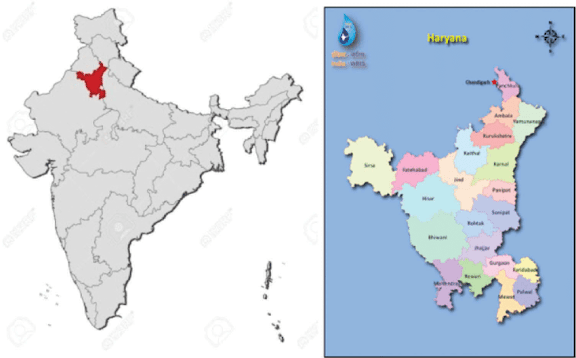A Brief History of the Indian State of Haryana
Haryana is one of India’s 28 states located in the northern region of the country. It has a rich and fascinating history that dates back thousands of years and was even mentioned in the Mahabharata. Haryana has a unique geographical location and has been shaped by different cultures and traditions over the years. In this blog post, we will take a look at the history of Haryana and how it has evolved over time to become what it is today.
Partition of India
The Partition of India in 1947 had a significant impact on the state of Haryana, which was then part of the Punjab Province. After the partition, the newly created Pakistan was separated from the Indian Union and the newly formed province of East Punjab became a part of India. This resulted in the birth of Haryana, which was formerly a part of the East Punjab region.
In 1966, Haryana was declared a separate state by the Indian Parliament and its boundaries were re-defined to include many parts of present-day Haryana. The new state was declared as the 17th state in India and the capital was shifted from Chandigarh to Haryana.
Since then, the state has seen tremendous development, with several major industries and educational institutes being set up in the region. It is now recognized as a major developer state in India, with high per capita income levels and an impressive literacy rate.
Contemporary Haryana
The Indian state of Haryana has had a complex and fascinating history. After gaining independence, the state of Haryana was officially established in 1 November 1966. During this period of transformation, Haryana sought to be a leader in economic growth, political stability, and social change. Today, Haryana is one of the most developed states in India, boasting some of the country's highest economic growth rates and lowest poverty levels.
Haryana has experienced significant industrial growth since its birth in 1966. This has largely been due to strong initiatives from the government to promote development, such as the State Industrial Promotion Policy and the Delhi-Mumbai Industrial Corridor Project. As a result, Haryana is now home to a large number of high-tech industries, such as information technology and automobile manufacturing. The state has also taken steps to create a robust agricultural sector, which has helped drive economic development in the region.
The state of Haryana has also made important strides in education, healthcare, and other social welfare policies. The state has implemented several programs designed to improve educational access and opportunities, such as free textbooks for students in rural areas and free vocational training for women. Haryana is also home to a variety of healthcare initiatives, such as free health camps and vaccination drives. In addition, the government has launched several initiatives to promote gender equality, such as providing financial assistance for single women.
Overall, contemporary Haryana has made tremendous progress since its birth in 1966. The state has experienced significant economic growth and social development, and has taken important steps to create a prosperous and equitable society. As the state continues to grow and develop, its residents can expect even more positive changes in the years to come.



Comments
Post a Comment